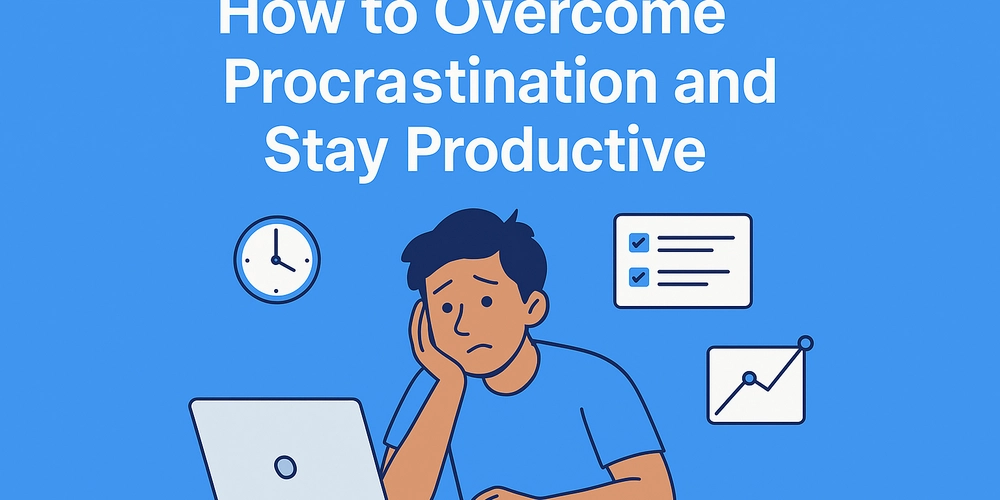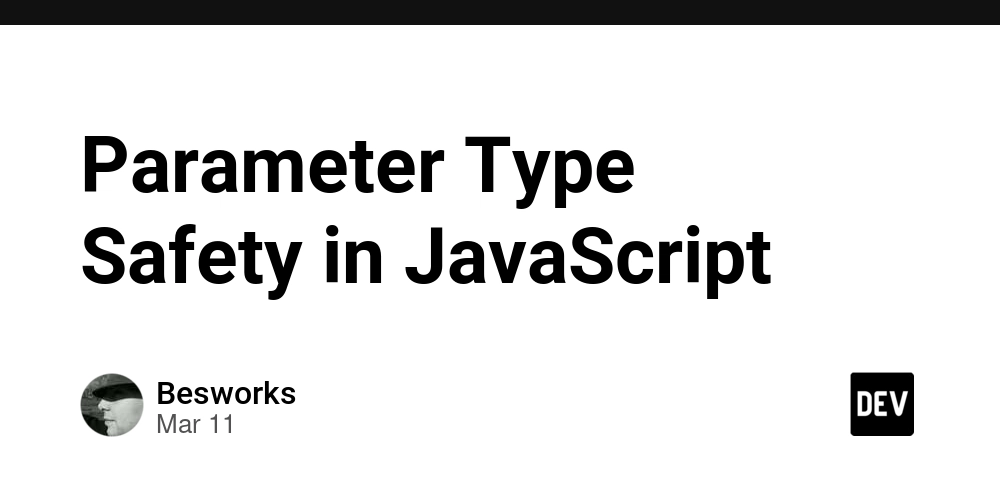How to Overcome Procrastination and Stay Productive
Introduction – The Science Behind Procrastination Procrastination is one of the biggest obstacles to productivity. Despite knowing the consequences, we often delay tasks, choosing instant gratification over long-term success. Why do we procrastinate? Fear of failure Perfectionism Lack of motivation Overwhelming tasks Distractions and poor time management The good news? Procrastination is not about laziness—it’s a habit that can be broken. In this guide, we’ll explore proven techniques to overcome procrastination and stay productive. 1. Identify the Root Cause of Procrastination Before tackling procrastination, it’s essential to understand why you’re delaying tasks. Common reasons include: Task aversion – The task feels boring, difficult, or unpleasant. Fear of failure – Worrying about the outcome leads to avoidance. Perfectionism – Delaying tasks because they need to be "perfect." Lack of motivation – No clear incentive to complete the task. Solution: Take a moment to analyze why you’re procrastinating and address the root cause. 2. Break Tasks into Smaller Steps One of the most effective ways to beat procrastination is breaking tasks into small, manageable steps. Why this works: Large tasks feel overwhelming. Smaller tasks provide quick wins, building momentum. Completing a small part reduces mental resistance. How to apply this: Instead of "Write a report," start with "Outline key points." Instead of "Build a website," start with "Choose a template." Small progress leads to big results. 3. Use the 5-Minute Rule If a task feels too difficult, convince yourself to work on it for just five minutes. Why this works: Reduces resistance to starting. Most people continue beyond five minutes once momentum builds. Tricks the brain into focusing on progress rather than effort. Example: If you’re avoiding writing an email, tell yourself, "I'll write the subject line first." The next thing you know, you’ve written the whole email. 4. Set Clear Deadlines Self-imposed deadlines create a sense of urgency and accountability. How to apply this: Use timeboxing – Allocate a fixed amount of time to complete a task. Set artificial deadlines – Finish tasks before they are due. Use countdown timers to limit time spent on each task. When tasks have no deadline, they often get postponed indefinitely. 5. Remove Distractions and Optimize Your Environment Procrastination thrives in a distracting environment. How to stay focused: Turn off phone notifications or use Do Not Disturb mode. Use website blockers for social media and distracting sites. Create a dedicated workspace for work only. Listen to focus-enhancing music (Lo-Fi, classical, or white noise). Your environment impacts your ability to stay productive. 6. Leverage the Pomodoro Technique The Pomodoro Technique is a time-management method that boosts focus: Work for 25 minutes (a "Pomodoro"). Take a 5-minute break. Repeat this cycle four times. Take a longer break (15-30 minutes) after every four cycles. Why this works: Increases focus by working in short bursts. Reduces mental fatigue. Provides structured breaks to prevent burnout. This method is excellent for tackling difficult or tedious tasks. 7. Use Accountability and Social Pressure Having someone hold you accountable makes you more likely to complete tasks. Ways to stay accountable: Public commitment – Tell a friend or colleague about your task. Find an accountability partner – Regularly check in on each other’s progress. Use a productivity app – Track and share progress with others. Humans are naturally more productive when someone is watching. 8. Reward Yourself for Progress Motivation increases when you associate work with rewards. How to apply this: Small rewards – Treat yourself to a snack or break after completing a task. Big rewards – Plan a fun activity after finishing a major project. Gamification – Use apps that turn productivity into a game (e.g., Habitica, Forest). When your brain expects a reward, you’re more likely to take action. 9. Reframe Your Mindset: Progress Over Perfection Perfectionism is a major cause of procrastination. How to shift your mindset: Done is better than perfect – Focus on progress, not perfection. Use iterative work – Improve as you go rather than delaying for perfection. Think of failure as feedback – Every mistake is a learning opportunity. Perfectionism delays action—progress moves you forward. 10. Automate and Delegate Repetitive Tasks Many procrastinate because their workload is overwhelming. The solution? Automate or delegate what doesn’t require your attention. How to apply this: Use task management tools to organize work. Automate repetitive tasks with productivity apps. Delegate non-essential work to free up time for critical tasks. When you

Introduction – The Science Behind Procrastination
Procrastination is one of the biggest obstacles to productivity. Despite knowing the consequences, we often delay tasks, choosing instant gratification over long-term success.
Why do we procrastinate?
- Fear of failure
- Perfectionism
- Lack of motivation
- Overwhelming tasks
- Distractions and poor time management
The good news? Procrastination is not about laziness—it’s a habit that can be broken. In this guide, we’ll explore proven techniques to overcome procrastination and stay productive.
1. Identify the Root Cause of Procrastination
Before tackling procrastination, it’s essential to understand why you’re delaying tasks. Common reasons include:
- Task aversion – The task feels boring, difficult, or unpleasant.
- Fear of failure – Worrying about the outcome leads to avoidance.
- Perfectionism – Delaying tasks because they need to be "perfect."
- Lack of motivation – No clear incentive to complete the task.
Solution: Take a moment to analyze why you’re procrastinating and address the root cause.
2. Break Tasks into Smaller Steps
One of the most effective ways to beat procrastination is breaking tasks into small, manageable steps.
Why this works:
- Large tasks feel overwhelming.
- Smaller tasks provide quick wins, building momentum.
- Completing a small part reduces mental resistance.
How to apply this:
- Instead of "Write a report," start with "Outline key points."
- Instead of "Build a website," start with "Choose a template."
Small progress leads to big results.
3. Use the 5-Minute Rule
If a task feels too difficult, convince yourself to work on it for just five minutes.
Why this works:
- Reduces resistance to starting.
- Most people continue beyond five minutes once momentum builds.
- Tricks the brain into focusing on progress rather than effort.
Example: If you’re avoiding writing an email, tell yourself, "I'll write the subject line first." The next thing you know, you’ve written the whole email.
4. Set Clear Deadlines
Self-imposed deadlines create a sense of urgency and accountability.
How to apply this:
- Use timeboxing – Allocate a fixed amount of time to complete a task.
- Set artificial deadlines – Finish tasks before they are due.
- Use countdown timers to limit time spent on each task.
When tasks have no deadline, they often get postponed indefinitely.
5. Remove Distractions and Optimize Your Environment
Procrastination thrives in a distracting environment.
How to stay focused:
- Turn off phone notifications or use Do Not Disturb mode.
- Use website blockers for social media and distracting sites.
- Create a dedicated workspace for work only.
- Listen to focus-enhancing music (Lo-Fi, classical, or white noise).
Your environment impacts your ability to stay productive.
6. Leverage the Pomodoro Technique
The Pomodoro Technique is a time-management method that boosts focus:
- Work for 25 minutes (a "Pomodoro").
- Take a 5-minute break.
- Repeat this cycle four times.
- Take a longer break (15-30 minutes) after every four cycles.
Why this works:
- Increases focus by working in short bursts.
- Reduces mental fatigue.
- Provides structured breaks to prevent burnout.
This method is excellent for tackling difficult or tedious tasks.
7. Use Accountability and Social Pressure
Having someone hold you accountable makes you more likely to complete tasks.
Ways to stay accountable:
- Public commitment – Tell a friend or colleague about your task.
- Find an accountability partner – Regularly check in on each other’s progress.
- Use a productivity app – Track and share progress with others.
Humans are naturally more productive when someone is watching.
8. Reward Yourself for Progress
Motivation increases when you associate work with rewards.
How to apply this:
- Small rewards – Treat yourself to a snack or break after completing a task.
- Big rewards – Plan a fun activity after finishing a major project.
- Gamification – Use apps that turn productivity into a game (e.g., Habitica, Forest).
When your brain expects a reward, you’re more likely to take action.
9. Reframe Your Mindset: Progress Over Perfection
Perfectionism is a major cause of procrastination.
How to shift your mindset:
- Done is better than perfect – Focus on progress, not perfection.
- Use iterative work – Improve as you go rather than delaying for perfection.
- Think of failure as feedback – Every mistake is a learning opportunity.
Perfectionism delays action—progress moves you forward.
10. Automate and Delegate Repetitive Tasks
Many procrastinate because their workload is overwhelming. The solution? Automate or delegate what doesn’t require your attention.
How to apply this:
- Use task management tools to organize work.
- Automate repetitive tasks with productivity apps.
- Delegate non-essential work to free up time for critical tasks.
When you reduce mental overload, productivity naturally increases.
How TaskFrame Helps You Stay Productive
Many professionals struggle with task overload and lack of structure, leading to procrastination.
Why TaskFrame?
- Structured task management – Break tasks into smaller, manageable steps.
- Time-tracking and prioritization – Stay on top of deadlines.
- Visual workflow management – See your progress in real-time.
By using TaskFrame, teams and individuals can stay focused, avoid delays, and accomplish more with less stress.
Conclusion – Take Control of Procrastination Today
Procrastination is a habit, but like any habit, it can be changed. By applying these 10 strategies, you can develop a more productive and focused mindset.
- Break tasks into smaller steps.
- Use deadlines and accountability to stay on track.
- Optimize your work environment and remove distractions.
- Reward progress and let go of perfectionism.
Want to manage your work efficiently and stay focused?
Try TaskFrame and start overcoming procrastination today!











































































































































































![[The AI Show Episode 142]: ChatGPT’s New Image Generator, Studio Ghibli Craze and Backlash, Gemini 2.5, OpenAI Academy, 4o Updates, Vibe Marketing & xAI Acquires X](https://www.marketingaiinstitute.com/hubfs/ep%20142%20cover.png)




























































































































![[DEALS] The Premium Learn to Code Certification Bundle (97% off) & Other Deals Up To 98% Off – Offers End Soon!](https://www.javacodegeeks.com/wp-content/uploads/2012/12/jcg-logo.jpg)


![From drop-out to software architect with Jason Lengstorf [Podcast #167]](https://cdn.hashnode.com/res/hashnode/image/upload/v1743796461357/f3d19cd7-e6f5-4d7c-8bfc-eb974bc8da68.png?#)








































































































.png?#)

































_Christophe_Coat_Alamy.jpg?#)
 (1).webp?#)





































































































![Apple Considers Delaying Smart Home Hub Until 2026 [Gurman]](https://www.iclarified.com/images/news/96946/96946/96946-640.jpg)
![iPhone 17 Pro Won't Feature Two-Toned Back [Gurman]](https://www.iclarified.com/images/news/96944/96944/96944-640.jpg)
![Tariffs Threaten Apple's $999 iPhone Price Point in the U.S. [Gurman]](https://www.iclarified.com/images/news/96943/96943/96943-640.jpg)




































































































































